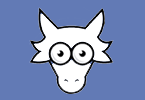Recent polling estimates that 4.5% of people in the United States identify as LGBT. Compare that to the number of queer protagonists in published novels, young adult or otherwise, and there’s an unfortunate gap.
Many authors, straight or queer, have decided to tackle this problem by including more LGBT characters in their stories and novels. I happen to think this is a lofty goal, especially considering the influence that reading about another queer person can have on young LGBTQ people who are feeling isolated and alone. For queer authors I say – go forth and conquer! Write about our lives and experiences, our friends and chosen family, and all of our most hilarious cultural inside jokes. For straight authors I say – consider these four rules first.
ONE: Consider your personal experience.
If you’ve never had a close relationship with an LGBTQ person, you should probably reconsider writing an LGBTQ character altogether.
No, I’m not being the P.C. Police – and sure, you absolutely can write about whoever and whatever you’d like – but if you want it to be believable and to resonate with queer and straight readers alike, starting from a place of total ignorance means this is unlikely to happen, no matter how many of the other rules you follow.
TWO: Do your research.
Just as you might, say, need to figure out what the day-to-day is like for a gardener, or a beekeeper, or a preschool teacher in order to build a character within that profession, you need to do your research about what daily life looks like for a queer person.
As a writer, you probably already have your go-to systems for doing research for stories or novels. Make sure you’re consuming lots of different kinds of media – fiction and nonfiction, film, podcasts, social media, etc. – to get a full picture.
Ideally, you should focus mainly on media produced by queer people rather than straight people. Some of my favorites are Curve Magazine, the Making Gay History podcast, and anything created by Carmen Maria Machado or Lena Waithe, but don’t take my word for it: do your own research and explore what’s out there! You can also do interviews with a wide variety of people to avoid falling back on stereotypes (see rule three) and to fill in the gaps.
Another good place to start is to learn what LGBTQIAA stands for and understand how the different identities inform people’s lives, as well as how these identities intersect with other identities related to gender, race, immigration status, class, etc.
THREE: Avoid the literary tropes associated with LGBT characters.
When it comes to literature, representation matters–but certainly isn’t everything, especially when that representation relies on worn-out stereotypes, as is often the case with queer characters.
You probably know some of these well: the gay best friend, the depraved and murderous bisexual, the lesbian couple whose only story is having or wanting kids, the closeted male athlete, the transgender sex worker.
Beyond these stereotypes, you should also avoid certain ways of using queer characters to further your plot. Don’t use being gay or trans as a plot twist for a straight protagonist. Don’t center your whole story around a character coming out — or make that the single most important event in their lives. And don’t kill off your one queer character unless you want the rage of the queer fandom to come down on you!
All of this is not to say that queer people don’t fit into any stereotypes or haven’t experienced one of these events, but these stories have been told (and told and retold) – and usually by straight writers. If all you think of when you think of queer characters is writing someone into one of these stereotypes, your task is to go back to rule two (and maybe rule one) and get back to work. When the only stories available follow the same tropes, there are so many voices and experiences that are left in the shadows.
FOUR: All the other rules of characterization apply.
Having an LGBT character doesn’t automatically give them a certain personality (see rule three) – which means you need to do your due diligence of characterization, just as you would for any other character. If you rely on their queerness to define them completely, you’ll end up with an extremely flat, boring, and unrealistic character.
Now go create your own LGBT characters!
Of course, you already know that writing is an art, not a science – there is no formula or set of rules that will be able to perfectly articulate how to write a believable queer character. Hopefully, with these guidelines, you’ll have a place to start that allows you to put your own creative, literary spin on things, and to contribute to the canon of beloved queer characters.




